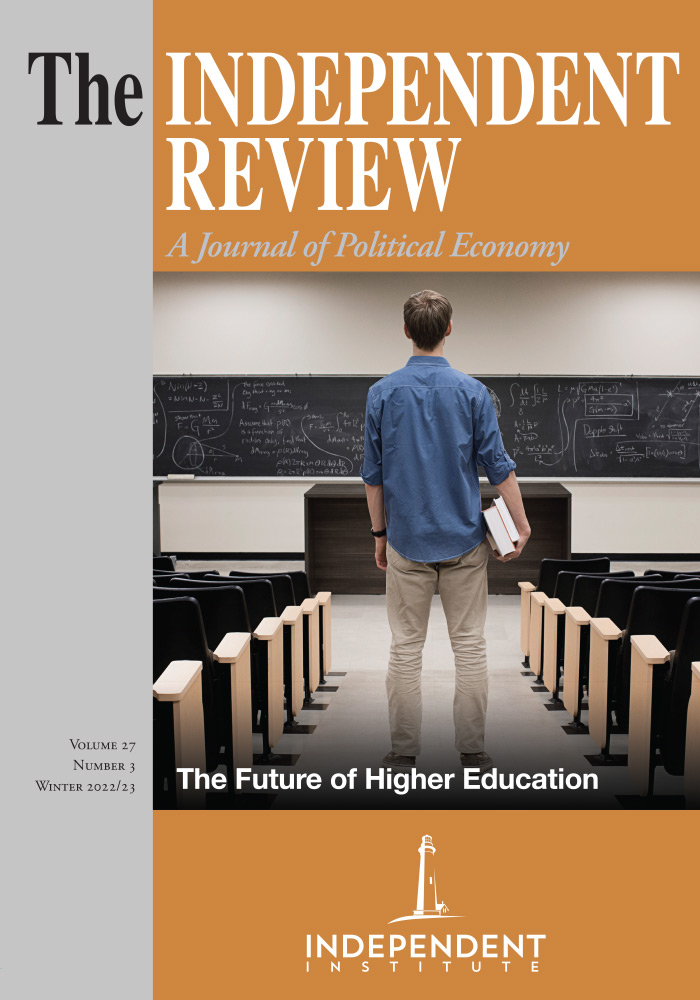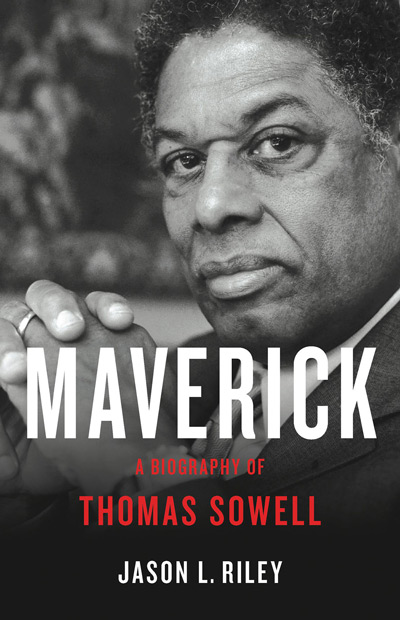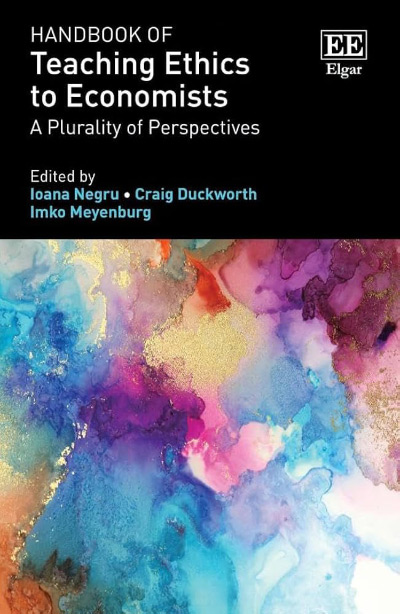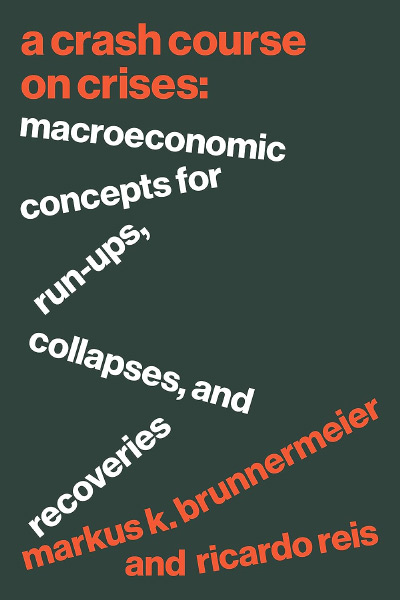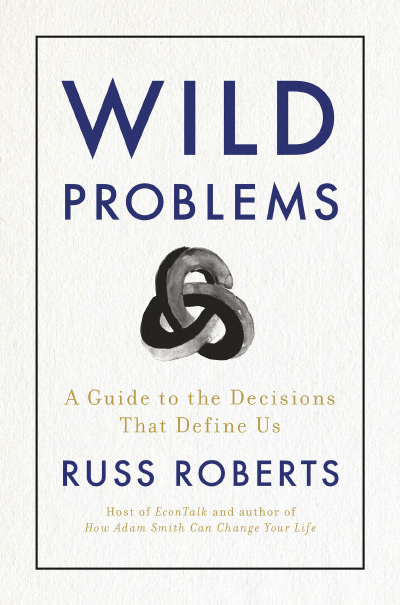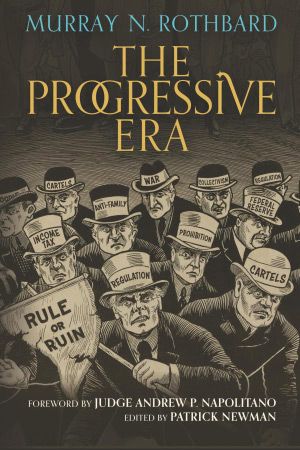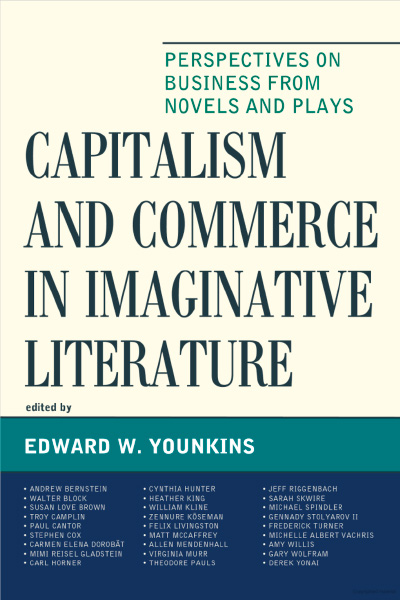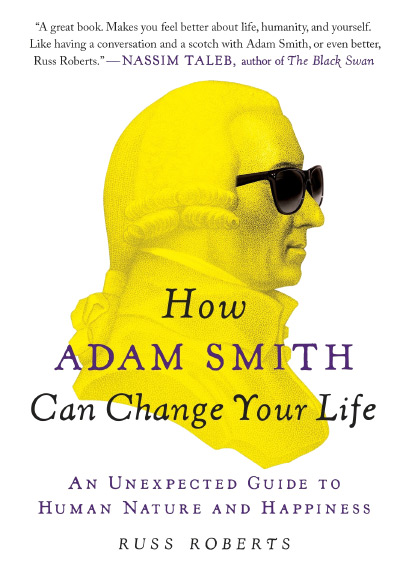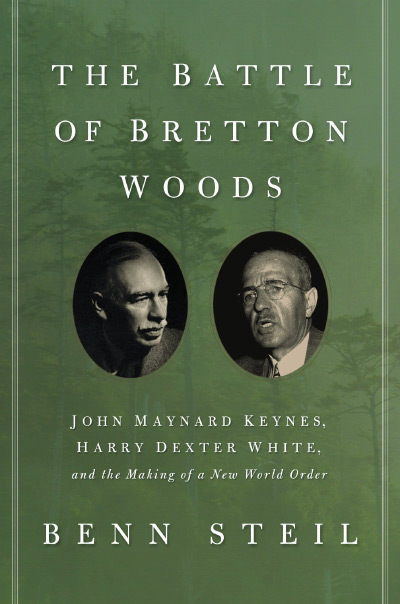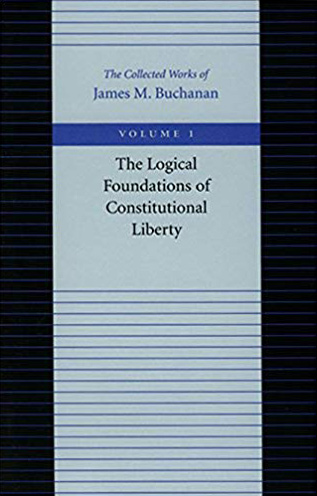Thomas Sowell is an economist, policy analyst, and social commentator whose output has been prolific in terms of volume and range—within economics and well beyond. Sowell has a cult following but is greatly under-rated. Ironically, he is vilified by those on the left because he’s African American and classically liberal. In Maverick, Jason Riley hopes to bring more attention to Sowell’s life, his ideas, and his thought process.
Riley describes Sowell’s remarkable background. Born in rural North Carolina in 1930 without electricity or running water, nobody in his family had achieved more than a 7th-grade education. His father died before he was born and his mother died soon afterwards, so he was raised by his great aunt in Harlem. He dropped out of school at 16; he was labeled by the courts as a “wayward minor”; and he lived in a shelter for homeless boys in the Bronx. After a stint in the Marines, he earned his undergraduate degree at age 28 from Harvard and his PhD ten years later from Chicago. Great schools, but not exactly a fast start!
Sowell’s perspective on his journey is instructive: “even my misfortunes were in some ways fortunate, for they taught me things that would be hard to understand otherwise ... I have lived through experiences which [most intellectuals] can only theorize about ... It gave me a lasting respect for the common sense of ordinary people ... a blind spot in much of their social analysis” (p. 4).
Along the same lines, Sowell is critical of those who have limited relevant experience or speak outside their areas of expertise. Riley cites Sowell’s pokes at Gunnar Myrdal, Bertrand Russell, Paul Ehrlich, Jacob Riis, and James Baldwin. They often “pay no price for being wrong” (p. 38). There is a tension here: when is enough study and expertise sufficient to speak with some authority? In any case, it is clear that elites and intellectuals often traffic beyond their knowledge, especially in economics and public policy.
As per the book’s title, Riley portrays Sowell as an iconoclast. Riley mines Sowell’s 2007 compilation of letters, where one can see his “directness, the wit, the swagger, the contrarianism ... at a very early date” (p, 46). In this, Sowell follows other independent thinkers, such as George Schuyler and Franklin Frazier (obscure African American intellectual cousins to Sowell) and P.T. Bauer. Bauer was virtually alone for decades in arguing that foreign aid and natural resources were neither necessary nor sufficient for economic growth in less-developed countries. (See also Charles Murray who took a lot of grief for Losing Ground: American Social Policy, 1950 – 1980 (1984, New York: Basic Books) but his critiques of welfare policy later became conventional wisdom.)
One key to Sowell’s analysis stems from basic economics: the importance of “trade-offs.” Even when there are great benefits to a policy, they should still be weighed against the costs, which often turn out to be great as well. This leads to either interesting debates or simplistically (and often dogmatically) ignoring one side of the reality equation. Even with civil rights in the 1960s, Sowell was concerned with the inherent trade-offs. For example, he asked “how much time and effort could be spared for endless campaigns to get into every hamburger stand operated by a redneck?” (p. 49). When historically black universities rushed to start graduate programs, Sowell argued that the relevant faculty were spread too thin, resulting in “fraud and a criminal waste of time for students” (p. 84).
Failure to see trade-offs leads to blindness, naivete, and bowing to good intentions. As Sowell observed, “People who have been trying for years to tell others that Negroes are basically no different from anybody else should not themselves lose sight of the fact that Negroes are just like everybody else in wanting something for nothing” (p. 52). Or as he rightly worried: “calls for equal treatment [will morph] into calls for special treatment” (p. 51).
This problem continues to our day in the realm of civil rights—as activists argue about reparations and topple statues, while ignoring far larger and clearer issues such as the impact of government’s welfare, education, and drug policies. From early-on, Sowell hoped for a day when “real thought” would dominate in areas “where slogans and labels hold sway” (p. 51). Alas, this has rarely happened in recent decades.
Seeing racial prejudice as a primary explanation for economic outcomes was absurd to Sowell, even decades ago: “even if whites were suddenly to abandon their racial prejudices, the immediate impact on the economic conditions of most blacks would be minimal” (p. 59). “The question is not whether people are discriminated against. The question is to what extent discrimination can explain differences in outcomes” (p. 149). The answer—unless perhaps if one wants to point fingers at the “systemic racism” of government—is minimal.
“The battle for civil rights was won decisively ... decades ago, and the succeeding years have painfully revealed that blatant denials of civil rights were not the universal explanation of social or racial problems” (p. 181). Moreover, people who claimed that “the black middle today is a product of civil rights legislation enacted in the 1960s and affirmative action policies implemented in the 1970s simply didn’t have the facts on their side ... The cold historical fact is that most blacks did lift themselves out of poverty by their own bootstraps—before political rescuers arrived on the scene” (pp. 180, 240).
To Sowell, “Affirmative Action” is troubling both ethically and practically. Advancing in his field before its emergence was one blessing to him. Spending his earlier research years in England, which had less emphasis on race and skin color, was another. Affirmative Action “calls into question the competency of all blacks by trying to help some blacks” (p. 204). For example, by the time Clarence Thomas graduated from Yale, the favoritism had begun to bear ill fruit.
Along these lines, Riley shares an amazing letter from Sowell to the chair of the Econ department at Swarthmore who was “actively looking for a black economist” in 1972.
What purpose is to be served by this sort of thing? ... Surely a labor economist of your reputation must know that unemployment among black Ph.D.s is one of the least of our social problems.... Many a self-respecting black scholar would never accept an offer like this.... Your approach tends to make the job unattractive to anyone who regards himself as a scholar ... and thereby throws it open to opportunists.... Despite all the brave talk in academia about ‘affirmative action’ without lowering standards, you and I both know it takes many years to create qualified faculty members of any color, and no increased demand is going to immediately increase the supply unless you lower quality. Now what good is going to come from lower standards that will make ‘black’ equivalent to ‘substandard’ in the eyes of black and white students alike?
As is obvious from historical examples like the Irish and the Japanese in America, political power was neither necessary nor sufficient for economic outcomes. Beyond that, Sowell “found suspect the whole idea of a need for racial and ethnic leadership ... Who has been able to take credit for the Jews rising or for the Asian Americans?” (p. 216). And then there’s the rank hypocrisy or at least incoherence: “Multiculturalists in the academy and in the media were trying to have it both ways ... ethnic cultures were unique ... at the same time, they refused to address the economic consequences of those differences” (p. 185).
Often, the crux of the matter is an unexpressed ideology. In A Conflict of Visions, Sowell describes what he calls the constrained (or tragic) vs. unconstrained (or utopian) visions. The constrained vision tries to pursue the best outcomes given the constraints at hand. The unconstrained view can’t see constraints and then seeks to maximize outcomes without the reality of costs. For them, “logic and evidence is not going to be your determining factor ... [instead, it’s] an aesthetic” (pp. 163 – 164). Or sometimes, the constraints are understood but cynically ignored—as is common in politics. As Sowell has quipped, “the first rule of economics is scarcity ... [T]he first rule of politics is to ignore the first rule of economics” (p. 163).
This takes us to the field of Public Choice Economics. Sowell began to reject his early Marxist beliefs after taking a job with the U.S. Department of Labor in 1960: “The experience of seeing government at work from the inside ... started me rethinking the whole notion of government as a potentially benevolent force ... [M]y adherence to the visions and doctrines of the left began to erode rapidly” (p. 43). The old adage is that a classical liberal is a fan of government who’s been mugged by reality. Some haven’t seen the reality; some ignore the reality; others imagine that the reality must be different with other realms of government. When Sowell saw the reality, he had the intellectual integrity and courage to adjust his vision.
For one thing, “intellectuals as a group have occupational self-interests just like everyone else” (p. 134). Political leaders are also incentivized in unfortunate ways: they “must offer ‘solutions’ that at least plausibly lie within the political domain. Therefore, whatever the real complex of forces at work ... political leaders tend to emphasize—sometimes exclusively—those factors for which a law or policy can be formulated.... In short, political ‘solutions’ tend to misconceive the basic issues.... These misconceptions may serve the political leadership well, even if they are counterproductive for the racial or ethnic group in whose name they speak” (p. 186).
See also: “black organizations.” There is “a long history of conflating the interests of most black Americans with the interests of black organizations, black journalists, black academics, and other black elites who profess to advocate on their behalf. And the media lazily continues to turn to these groups.... Black ‘leadership’ in general does not depend on expressing the opinions of blacks but on having access to whites.... Whites who have a limited time to give to the problems of blacks need a few familiar blacks they can turn to. The civil rights organizations provide that convenience” (225, 228 – 229). Sowell also “pointed out the hypocrisy in assuming that only blacks on the political left can take money from white benefactors and maintain their integrity.” For this, he even called the NAACP “classic house niggers” (p. 55). Ouch!
And then there is the intersection of Austrian Economics with Sowell’s thought—in particular, what’s called “the knowledge problem” and how it is addressed by economic and political markets. It’s not the knowledge of experts that is so vital, but the knowledge that is dispersed throughout markets and society. So, the “expanding role of experts in politics” and greater “reliance on centralized government” are problematic, since this “translates into less efficient applications of knowledge and a larger gap between the people who make decisions and those who have to live with the consequences” (p. 134). While “there is seldom a shortage of people willing to draw up blueprints for salvation, what is important is that such people and those who judge their proposals both understand what they are talking about” (pp. 203 – 204).
Finally, Sowell’s work in the arena of race and IQ is also noteworthy—both for what he discovered and his general approach to academics, science, knowledge, and truth. Kenneth Clark, a prominent African American in the field, discouraged Sowell from testing Arthur Jensen’s controversial theories in the area, but Sowell “wasn’t afraid of what he might find” (p. 8). He discovered a number of reasons to suspect theories that average IQ scores are fully innate—not that genetics are irrelevant, but rather that they are secondary and not fixed in their impact. For example, black orphans adopted by whites had IQ’s 21 points higher than other blacks.
But “just because results could be misused didn’t mean they should be discarded altogether” (p. 115). Of greatest interest to me, he both praised and critiqued Charles Murray’s controversial work in The Bell Curve: Intelligence and Class Structure in American Life (1994, New York: Free Press) with Richard Herrnstein. In contrast to the usual “professional” hackery in attacking TBC, Sowell’s analysis was commendable. Then, from a positive angle, in his own research, we see Sowell effectively wrestling with the extent to which race and culture matter within inter-group differences.
Let me close with four miscellaneous quotes from the book:
“Sometimes it seems as if I have spent the first half of my life refusing to let white people define me and the second half refusing to let black people define me” (p. 223).
“I’m not sure I want to be particularly remembered. I would like the ideas that I’ve put out there to be remembered” (p. 2).
“Disagreements can be productive, while misunderstandings seldom are” (p. 105).
“When you want to help people, you tell them the truth. When you want to help yourself, you tell them what they want to hear” (p. 171).
With these quotes, we can see why Sowell is one to emulate in terms of character and intellect. Don’t let others define you. Focus on truth and ideas, not personalities. Work to understand people, context, and ideas. Be relentless in seeking and sharing truth. May we all follow in Sowell’s inestimable footsteps.
| Other Independent Review articles by D. Eric Schansberg | ||
| Winter 2023/24 | Vivek Ramaswamy on What’s Troubling America | |
| Winter 2021/22 | The Meritocracy Trap: How America’s Foundational Myth Feeds Inequality, Dismantles the Middle Class, and Devours the Elite | |
| Summer 2021 | Virtue Hoarders: The Case against the Professional Managerial Class | |
| [View All (11)] | ||

